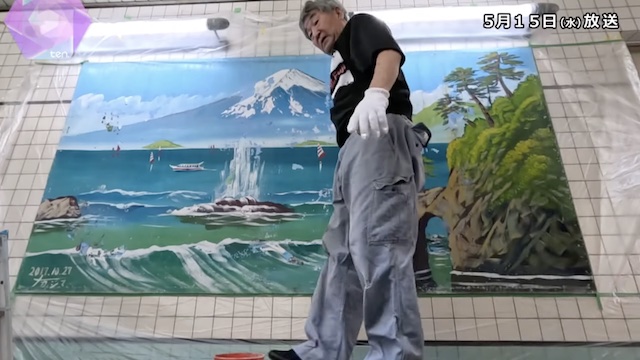OSAKA, May 16 (News On Japan) - In Osaka, a public bathhouse famous for its painted Mt. Fuji mural underwent a much-anticipated restoration on May 15, the first in seven years.

The bathhouse, located in Higashisumiyoshi Ward, has been in operation for over 60 years. On the morning of the 15th, loyal patrons gathered in the large bath area, fully clothed, to witness the restoration.
Morio Nakashima, 79, one of only two bathhouse muralists in Japan, led the effort. "Give me the white paint," Nakashima instructed, as he began repainting the Mt. Fuji mural on the bathhouse wall.
These murals require periodic repainting, and this project marked the first update in seven years. Nakashima, who has been a bathhouse muralist for 60 years since he started at the age of 19, explained his approach: "I come to the site with no preconceptions and completely change the previous painting after seeing it."
One onlooker noted, "Having this vibrant mural always present brightens the entire bathhouse experience."
Two hours into the work, a new Mt. Fuji emerged. "It's like Van Gogh! Truly, the Van Gogh of bathhouse murals," exclaimed one impressed spectator.
Nakashima, 79, expressed his dedication: "Everyone looks forward to this, so I put my heart into the work."
The new mural features Mt. Fuji towering over a serene lake, cherry blossoms evoking the gentle atmosphere of spring, and auspicious pine trees vividly painted.
Amid the Showa retro ambiance, bathers can soak and relax, easing the fatigue of the day.
Source: YOMIURI














